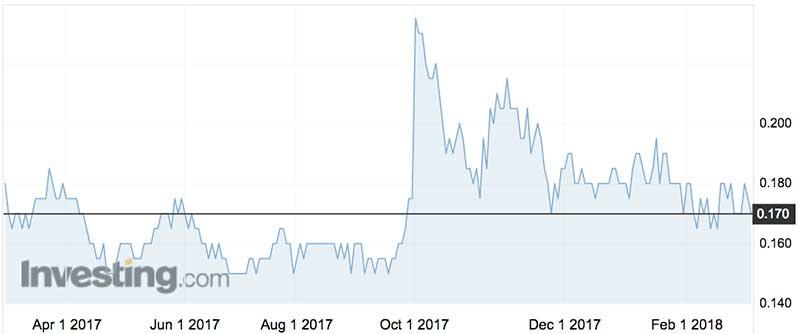You might be interested in
Mining
Monsters of Rock: MinRes has 'seen the bottom' in lithium prices, Lynas tightens the screws on rare earths supply
News
Closing Bell: ASX loses its bottle, but Gold50 shows some Gallium to advance 50pc
Mining
Mining
Chalice Gold Mines is joining a modern day exploration rush to find the “new’’ Bendigo, writes Barry FitzGerald in his weekly Garimpeiro column.
Cashed-up Chalice Gold is angling to join the rejuvenated hunt for big, high-grade gold deposits in Victoria.
Chalice (ASX:CHN) has applied for big ground positions to the north of the historic Bendigo goldfield with the aim of uncovering gold deposits hidden from the old-timers by extensive Murray Basin sediments.
Interest has soared in Victoria’s potential to host big gold deposits beyond the gold rush goldfields of Bendigo and Ballarat. That’s due to the rich strike by Canada’s Kirkland Lake beneath historic open-cuts at its Fosterville project, 20km east of Bendigo.
Fosterville is on its way to being the best gold mine in Australia as Kirkland works on increasing production from 260,000-300,000oz this calendar year to as much as 400,000oz in 2020 when the super high-grade Swan Zone (1.16 million ounces grading two oz of gold a tonne) is in full production.
Helping fuel interest in Victorian gold — and in the area to the north of Bendigo in particular — is a persistent industry rumour (and that is all it is) that one of the active juniors has recently notched up something special.
Time will tell on that score.
What is more certain is that Chalice has plugged itself in to what has become something of a modern day exploration rush to find the “new’’ Bendigo under cover to the north of the old goldfield, spurred on by Kirkland’s success to the east.

Chalice has applied for two exploration applications covering 1300 sq km.
The applications have recently been advertised and are going through a final assessment process, with a decision to grant them due later this year.
The company is calling the ground along the Mickelford Fault its Pyramid Hill project.
Ahead of the applications being granted, a review of available data has indicated the presence of a series of sub-parallel regional faults in so-called Bendigo Zone sediments under the Murray Basin cover.
Chalice is well placed to join the Victorian hunt thanks to its cash kitty of $43 million, and liquid investments of $3 million.
The cashed-up position is a throwback to decisions in 2012 and 2016 to cash in its chips in advanced gold projects in Eritrea and Canada respectively.
The combined $46 million value of the cash and liquids is just $1 million shy of Chalice’s $47 million market value at its last sale price of 17c a share (276 million shares fully diluted).
As the Victorian push has yet to be confirmed with tenement grants, it is fair to say there isn’t – and shouldn’t be – much in the company’s share price for the move just yet.
But it could also be said that the implied $1 million value of Chalice’s other exploration interests is on the mean side of things.
The company’s flagship project is its East Cadillac gold property in the prolific Abitibi region of Quebec, Canada.
An intensive drilling program continues at the property with four drilling rigs in operation as Chalice works towards outlining a high grade resource on the Larder Lake-Cadillac fault — a gold trend in southern Abitibi with a proven gold endowment of more than 100 million oz.

East Cadillac covers 16km of strike along the gold trend and by comparing its near-zero market value (after deducting its cash and liquids) to that of its peers in the region, Chalice argues that its position on the trend is being heavily undervalued.
It has spent $C5.2 million to date on advancing the property and assay results from the drilling program should begin to flow in May.
At the Kinebek gold project 150km to the north and covering 30km of strike along the Casa Beradi fault, home to a 6 million oz deposit owned by Hecla Mining, a maiden drilling program was recently completed.
Assay results are expected in March.